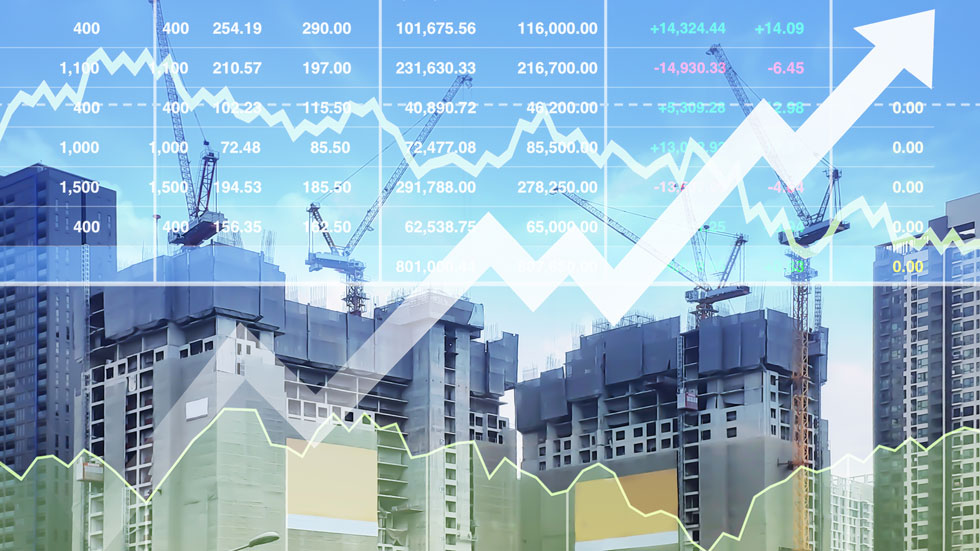Green Street’s new Director of Research Cedrik Lachance says real estate is in a good spot right now, with strong fundamentals and a runway for growth for property sectors worst hit by COVID-19 as well as those that flourished during the crisis.
Lachance assumed the role on July 1, taking over leadership of the Green Street research team from co-founder Mike Kirby who will continue to be involved in writing, research, and mentoring for the Newport Beach, California-based firm.
Green Street’s roots are in analyzing public real estate owners and it is regarded by many as the gold standard of REIT research and intelligence. While Lachance regards the term ‘REIT shop’ as a great compliment, “we do so much more now,” he says, including news, data, analytics, private-market research, and advisory services in the United States and Europe.
Green Street’s research team covers 85 REITs in the U.S. and 40 public real estate companies in Europe. Lachance, who has been with the firm for 17 years and is currently based in the United Kingdom, spoke on a variety of issues including the many post-pandemic trends that will require the insights and collaboration of his team going forward.
How would you describe fundamentals for U.S. REITs at this time?
Well, it certainly feels very good out there. Just from a pure GDP perspective, this is a year of rebound and many of us have increased our GDP forecasts and expectations in 2021 and in some cases for 2022 as well. Ever since we got news of the new vaccines in November 2020, estimates have been going up and of course share prices have been going up tremendously.
From a fundamentals perspective, we’ve moved past COVID very distinctly. There are sectors that have hardly suffered, or in fact, have benefited to some extent from the COVID era. Manufactured homes and industrial are two sectors that we think will have the best combination of market rent growth and occupancy gains over the next five years.
If you look from a cashflow perspective, you’re seeing significant rebounds in sectors that were more affected by the pandemic, such as senior housing and lodging. You’re seeing also very attractive, sustainable growth for the next few years in sectors like apartments, single-family rental, and student housing. In fact, a number of other sectors should experience NOI growth in the 4%-5% range for the next couple of years. So, this is a good period of time for the real estate business and we see that continuing.
What are some other developments on your broader radar?
Two things I want to mention on this front are that we believe firmly that the public market will remain an area of growth for real estate investors, and there are very good reasons to have a portfolio that includes public and private real estate. We think the public markets should grow in a healthy fashion going forward.
Now to inflation. There are no inflation spikes priced into the bond market and as a result, there are no inflation spikes priced into the real estate market either. The REIT market currently is priced attractively versus a lot of investment alternatives; our recent study of inflation and real estate suggests that real estate is a very good hedge for inflation. We find that to be a very interesting theme right now as real estate should perform well whether inflation returns to normal quickly, or whether we have much higher inflation for years to come.
What does the active M&A landscape in 2021 say about the state of the commercial real estate industry?
From an economic perspective, there’s a lot more clarity as to what’s going to happen so companies are more capable of making important decisions— and that’s true of the buyer and seller. What we’ve observed, in particular in the public markets so far, is really the disparity between a company with a very good cost of capital and a company with a not so good cost of capital, which can lead to business combinations. Mergers in these situations make a ton of sense and that’s where you’ll see, more likely than not, the mergers in the future.
You’re also starting to see a little bit of privatization. We had a very big deal earlier this year with QTS Realty Trust (NYSE: QTS) being acquired by Blackstone. Now that you have visibility and given the private capital available, we should experience a little bit more transaction activity of this type too.
How long could it be before there’s a clearer sense of new working patterns and what does that mean for office REITs in the meantime?
This has been the big question since the start of COVID and it’s interesting to see the back and forth between employers and employees. Work from home is really the defining story of the real estate world in the pandemic. There is going to be tension between those that believe there should be more work from the office versus work from home.
But when you look through what choosing where one does work actually means, it has significant impacts not just for office but for residential, hotels, suburban shopping centers, etc., which will all have different fundamentals based on the decisions that people make about going to work.
We believe firmly that the public market will remain an area of growth for real estate investors, and there are very good reasons to have a portfolio that includes public and private real estate.
I’m afraid the lack of clarity is going to last for at least another 12 months because implementing a hybrid work world is truly daunting from an employer’s perspective. We have a lot of experience now working from home, but we haven’t really done the true hybrid world of trying to manage companies in which you have individuals that want to be in the office five days a week, and individuals that never want to see an office again.
We expect that when it’s all said and done, you’ll have about a 15% drop in office demand. It’s not going to happen overnight and you’re going to see a lot of disparities between certain markets and certain countries. Some of the coastal markets in the U.S. should suffer a little bit more from work from home, whereas in markets that are more dynamic from an employment perspective, often in the South, one might not even notice that work from home is becoming a greater percentage of the pie. So, we’re open-minded as to what will happen, but we are fairly cautious about the office business.
Are there interesting or important trends that you’re watching within the European REIT sector?
What we’re trying to accomplish as a firm is to be more globally minded and use both the trends that we see in Europe and in the U.S. to create better research. We were able to capitalize on that early on in the pandemic because the challenges associated with COVID were taking place a lot sooner and in a more noticeable fashion in Europe than in the U.S.
Work from home is one trend where we’re a little bit more open-minded that the office business will do well in some areas of continental Europe because work from home may not be embraced as much.
The other theme that’s really interesting to me in Europe is the growth of non-traditional property sectors in the public market. In the U.S., non-traditional sectors represent more than half the value of the REIT industry. That’s been fantastic for the industry and it’s been a great way for investors to participate in the growth of these sectors. In Europe, we’re not quite at the same point.
So to me, the health care business, the storage business, and the residential business—should flourish in the public market over time and that will be a very interesting trend for investors to focus on in Europe.
What do you see as some of the main priorities of your new role for the short and medium term?
Going forward, it’s about continuing to fine-tune our product, being more active using our global presence, and following on themes globally that we can amplify in certain regions. At the same time, Green Street will continue to focus on thought leadership—that’s very important for us— and bulk up our data infrastructure and our products for both the U.S. and Europe.

